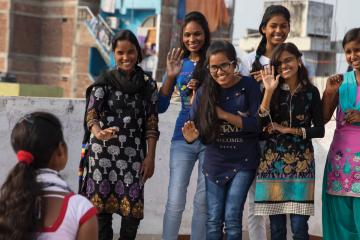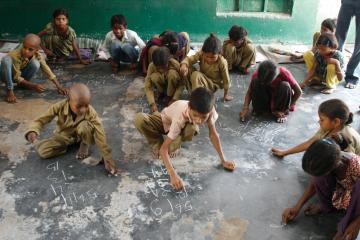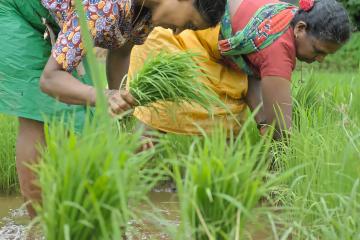
Investing in girls’ secondary education can have big payoffs for girls and for the next generation.

Investing in secondary education for girls can improve lives for multiple generations. Scholarships helped girls stay in high school, advance to college, and earn higher incomes. Years later, their children were more likely to survive and showed greater cognitive skills. Governments should factor these next-generation impacts into education investments.
Free secondary education is cost-effective, and targeting students with the highest need can further lower costs. In settings where universal free secondary schooling may not be feasible, providing scholarships in communities with high infant mortality and targeting students with greater financial need can achieve important reductions in future child mortality.
Funders focused on life-saving interventions should invest in education. Education policy has health impacts across generations. Closer collaboration between health and education actors—ministries, funders, and implementers—can help improve lives for today’s and tomorrow’s children.
Every minute, thousands of children under the age of five die from preventable causes. Thanks to proven health programs like access to clean water and vaccines, under-five mortality has dropped by more than half since 1990. Still, in 2023, an estimated 4.8 million children didn’t reach their fifth birthday—a number that remains too high. Public health programs are essential for preventing child mortality, but can other, complementary strategies help save young children’s lives?
In Ghana, a long-term randomized evaluation shows the promise of a simple approach: scholarships that make high school education free for girls. In many low- and middle-income countries, school fees are too high for families to afford, and many girls are unable to attend high school. In sub-Saharan Africa, secondary school enrollment is below 50 percent, with large gaps between girls and boys. Sub-Saharan Africa also has the world’s highest child mortality rates. Policymakers have long believed in the power of education to lift up generations; this research clearly demonstrates how education can benefit not only young women but also their children.
Scholarships shifted the course of girls’ lives and the lives of their future children. In the Ghana study, fifteen years after receiving scholarships, girls graduated high school and college at dramatically higher rates and earned higher incomes. When they became mothers, their children were healthier and performed better on cognitive tests than the children of mothers who did not receive scholarships. Most striking of all, scholarship recipients’ children were twice as likely to survive early childhood.

Scholarships achieved life-saving impacts at a cost comparable to some public health programs. Governments should take this insight into consideration when adopting free public education or a targeted scholarship program, yet some governments may require support in bridging the financial gap. That’s why organizations committed to improving child survival and health should consider stepping in. Investing in girls’ secondary education can be more than a promising education intervention—it can be a life-saving opportunity.
Most striking of all, scholarship recipients’ children were twice as likely to survive early childhood.
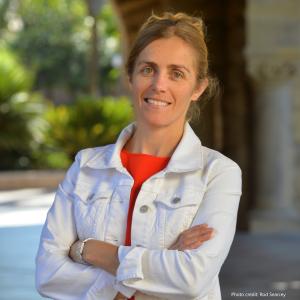
"We could call this education's dual dividend: You can massively boost the human capital of two generations for the price of one."
—Pascaline Dupas, J-PAL Africa Scientific Director
Cost and design considerations
Governments considering adopting free public education or a targeted scholarship program need to weigh the up-front costs and long-term benefits. Is the cost worth it, especially for governments facing limited budgets and competing priorities? Answering this question requires looking beyond schooling outcomes alone—to how education shapes broader development goals, including public health. This study offers strong evidence that secondary school scholarships can lead to lasting health, economic, and human capital gains.
The benefits of free education exceeded the cost of the scholarships. In Ghana, providing secondary school scholarships cost around US$585 per student. The cost per life-year saved was estimated at US$170 if only girls received scholarships, and US$260 if both boys and girls received scholarships. Researchers estimated that the scholarship’s broader benefits across two generations were at least six times the program’s cost, and potentially higher.
Some design considerations can increase cost-effectiveness. Targeting high school scholarships to girls would make the program more cost-effective, though such choices should also incorporate fairness and equity in education access. In addition, policymakers and funders can make scholarships even more cost-effective by focusing on communities with large gender gaps in school enrollment, high secondary school dropout rates, or high infant mortality rates.
Impacts on infant and child survival across generations put these scholarships on par with some life-saving health programs.
Implementing partners
Implementers bring deep local knowledge, technical expertise, and a commitment to evaluation and learning as they bring these programs to life. Partners include the following key collaborators (listed in alphabetical order).
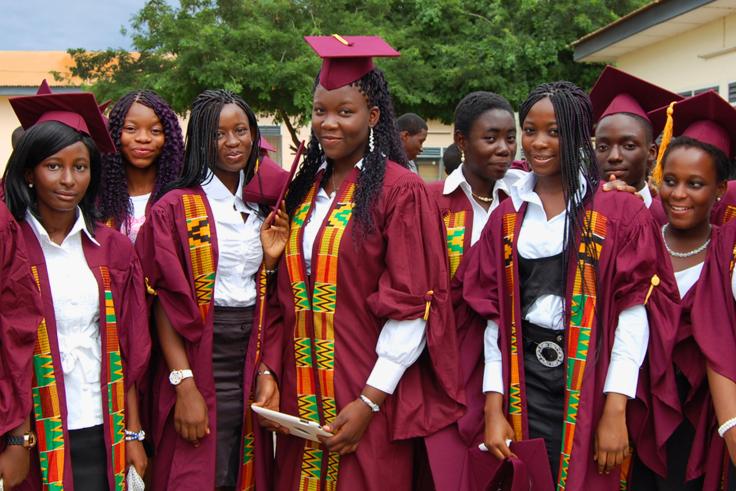
The role of foreign assistance and philanthropy
Long-term evaluations of programs can yield surprising results that can change decisions about where to invest—yet long-term studies can be expensive. This study is the first randomized evaluation of the impact of secondary education on the decision of when and how many children to have, and how those children fare early in life. Funders can play an important role in investing in this type of long-term learning, with the potential to shift public and philanthropic spending in significant ways. In this case, a US NIH grant supported the first five years of the study, implemented by Innovations for Poverty Action. Bilateral aid agencies and philanthropies funded the long-term follow-up, with support from the British Academy, USAID Development Innovation Ventures, and through J-PAL’s Post-Primary Education Initiative, Google.org, the MacArthur Foundation, and the UK Foreign, Commonwealth and Development Office.
Another important role for philanthropy is funding pilot programs of promising innovations that are not yet feasible for low- and middle-income governments to fund. In this case, the Nike Foundation and Partnership for Child Development funded the scholarships. In 2017, nine years after this study began, the Ghanaian government instituted a national free senior high school policy, covering tuition and fees for all admitted students. Researchers shared the evidence with local policymakers and stakeholders over the course of the long-term evaluation, and the research was also publicized in the media around the time that the government announced its decision.
Discover more from J-PAL
Roll Call: Getting Children into School
Discover more from other sources
Subsidising secondary education has huge benefits, for this generation and the next
VoxDev
A critical moment to prioritize girls’ secondary education in sub-Saharan Africa
World Bank Blogs
Fee Free SHS education - A democratic dividend for the Ghanaian voter
GhanaWeb
Is free secondary schooling pro-poor?
Center for Global Development Blog
Returns to secondary schooling in Ghana
Innovations for Poverty Action
Targeting scholarships and cash transfers for secondary education in sub-Saharan Africa
Mastercard Foundation
The Impact of Free Secondary Education: Experimental Evidence from Ghana
NBER Working Paper
Photos:
(1) A local student in Kumasi, Ghana taking notes. Credit: BlackBoxGuild, Shutterstock.com
(2) Students on their high school graduation day in Accra, Ghana. Credit: Nataly Reinch, Shutterstock.com
